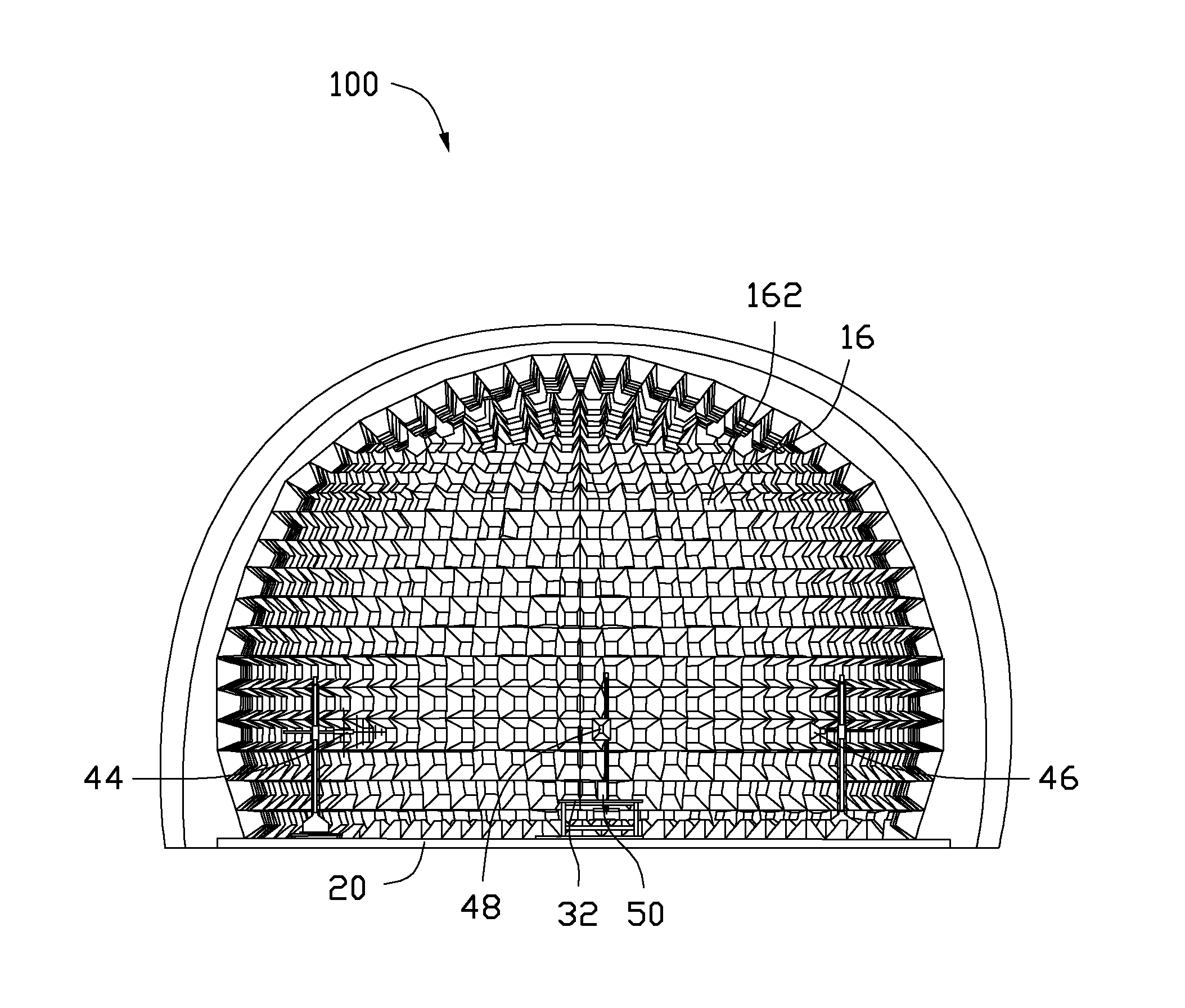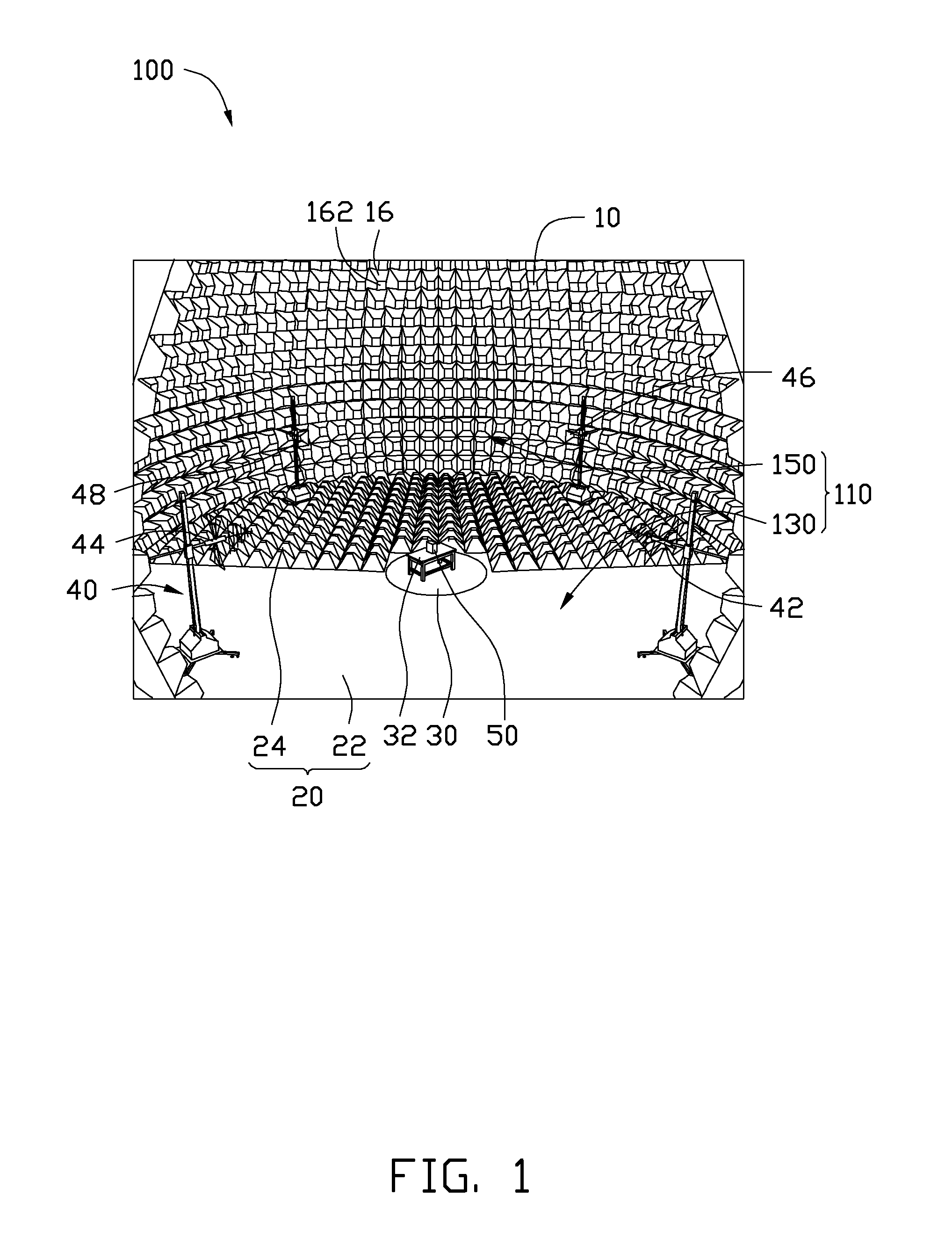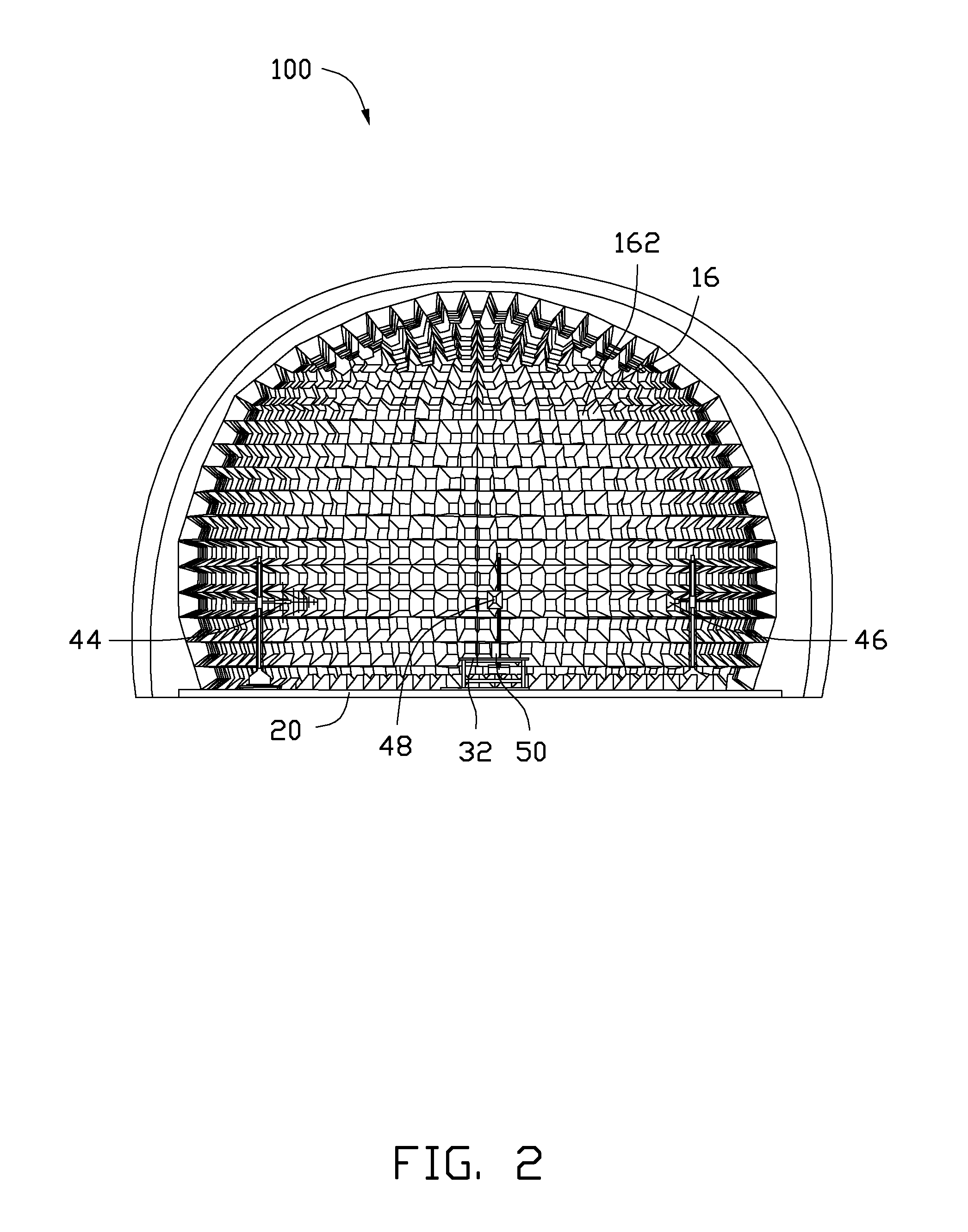Electromagnetic anechoic chamber
- Summary
- Abstract
- Description
- Claims
- Application Information
AI Technical Summary
Benefits of technology
Problems solved by technology
Method used
Image
Examples
Embodiment Construction
[0009]The present disclosure, including the accompanying drawings, is illustrated by way of examples and not by way of limitation. It should be noted that references to “an” or “one” embodiment in this disclosure are not necessarily to the same embodiment, and such references mean “at least one”.
[0010]FIG. 1 is a partial view of an exemplary embodiment of an electromagnetic anechoic chamber 100. The electromagnetic anechoic chamber 100 can be used for testing of electromagnetic radiation generated by items of information technology equipment (ITE), such as personal computers, liquid crystal displays, and mobile telephones (electromagnetic compatibility (EMC) testing). The electromagnetic anechoic chamber 100 includes a peripheral wall 10, a bottom wall 20, a rotating platform 30, and an antenna array 40.
[0011]FIG. 2 is a front-on view of the electromagnetic anechoic chamber 100 shown in FIG. 1. Referring to FIG. 1 and FIG. 2, the peripheral wall 10 is partially spherical, which is c...
PUM
 Login to View More
Login to View More Abstract
Description
Claims
Application Information
 Login to View More
Login to View More - R&D
- Intellectual Property
- Life Sciences
- Materials
- Tech Scout
- Unparalleled Data Quality
- Higher Quality Content
- 60% Fewer Hallucinations
Browse by: Latest US Patents, China's latest patents, Technical Efficacy Thesaurus, Application Domain, Technology Topic, Popular Technical Reports.
© 2025 PatSnap. All rights reserved.Legal|Privacy policy|Modern Slavery Act Transparency Statement|Sitemap|About US| Contact US: help@patsnap.com



